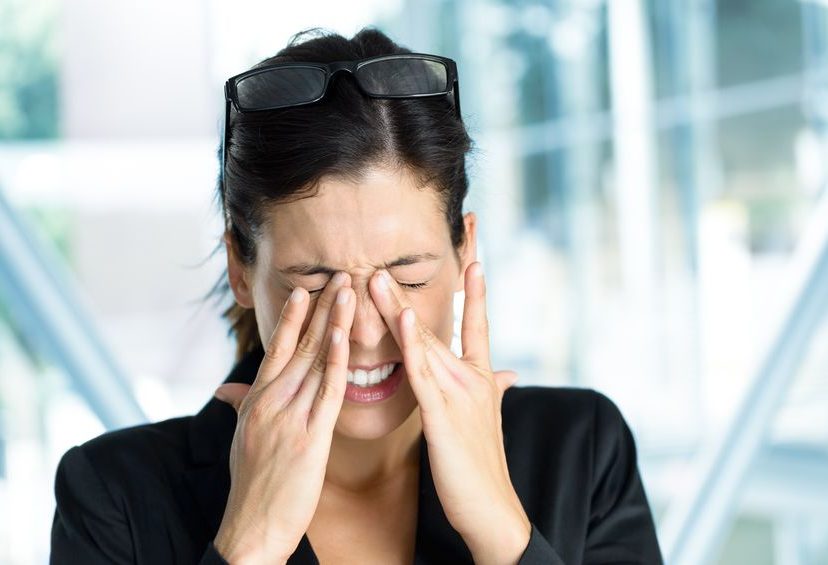Do your eyes often feel dry, itchy, and irritated? If so, you could have an eye condition aptly called dry eye syndrome, or dry eye disease. What many people don’t realize, though, is that there are two different types of dry eye: aqueous tear deficiency and evaporative dry eye disease. Depending on the specific type of dry eye syndrome you have, the most appropriate treatment and management options can vary. Use this as a guide to help you determine which type of dry eye you might have and how best to treat it.
What Is Aqueous Tear Deficiency?

Aqueous tear deficiency is a type of dry eye syndrome that happens when the lacrimal glands, which are responsible for producing tears, do not produce sufficient tears for proper function of the eye. Studies have found that chronic inflammation, combined with thickened tear ducts can cause tears to accumulate within the lacrimal gland, resulting in age-related aqueous tear deficiency dry eye [1]. Other causes of lacrimal gland dysfunction include:
- Smoking. Researchers believe that the oxidative stress caused by cigarette smoke, whether due to first-hand or second-hand exposure, can contribute to aqueous tear deficiency [1]. However, more research is needed to determine the exact mechanisms behind this connection.
- Computer usage. Although this hypothesis is largely untested, there is still much evidence to suggest that computer usage and other similar screened devices, such as video games, tablets and smartphones, can lead to aqueous tear deficiency. This is because when we use these devices for long periods of time, most people tend to blink less frequently, which can cause the eyes to become dry [1].
- Existing health conditions. Aqueous tear deficiency tends to be more common in those with certain medical conditions, including HIV, hepatitis C and Sjogren’s syndrome.
What Is Evaporative Dry Eye?

Evaporative dry eye disease is the more common of the two types of dry eye and is most frequently caused by a condition known as meibomian gland dysfunction [2]. There are approximately 25 to 40 meibomian glands located in the upper eyelid, and another 20 to 30 in the lower eyelid [3]. These glands are responsible for secreting oils that help to prevent the evaporation of tears from the surface of your eyes. In people with meibomian gland dysfunction, these glands are either clogged or otherwise unable to secrete enough oils to prevent tear evaporation, which can, in turn, lead to dry eye.
There are a number of risk factors that can make some people more susceptible to meibomian gland dysfunction than others, such as:
- Age
- Ethnicity
- Environmental factors such as wearing makeup or contact lenses
- Bacterial or Microbial Activity
- Demodex Mites
Are There Any Similarities?
Aqueous tear deficiency and evaporative dry eye disease can be difficult to distinguish, as they tend to present similar symptoms, like dryness, redness, itchiness and general eye irritation. Although underlying inflammation is a commonality between these two conditions, each affects a different part of the eye, which can affect the way that these eye conditions are treated [4].
Dry Eye Treatment and Management

Aqueous tear deficiency is typically treated using artificial tears, medications such as cyclosporine and medical devices called punctal plugs. These devices work by preventing eye fluid drainage to help maintain a higher level of tears within the eyes [5].
Some of the most common treatment methods for evaporative dry eye disease, on the other hand, include warm compresses, omega fatty acid supplements and lipid-based eye drops to help increase the oil content of the eyes.
To help alleviate the symptoms of either cause of dry eye and to prevent future infection and other eye area complications, it is also important to maintain healthy eyelid hygiene. Use a gentle eyelid cleansing product like Cliradex Light Foam, which is free of preservatives, non-irritating, non-toxic and kills eyelid bacteria. Combine a regular eyelid cleansing routine with the right treatment options recommended by your eye specialist to help reverse the signs of aqueous tear deficiency or evaporative dry eye disease.
[3] All About Vision
[4] Optometry Times
[5] Mayo Clinic




